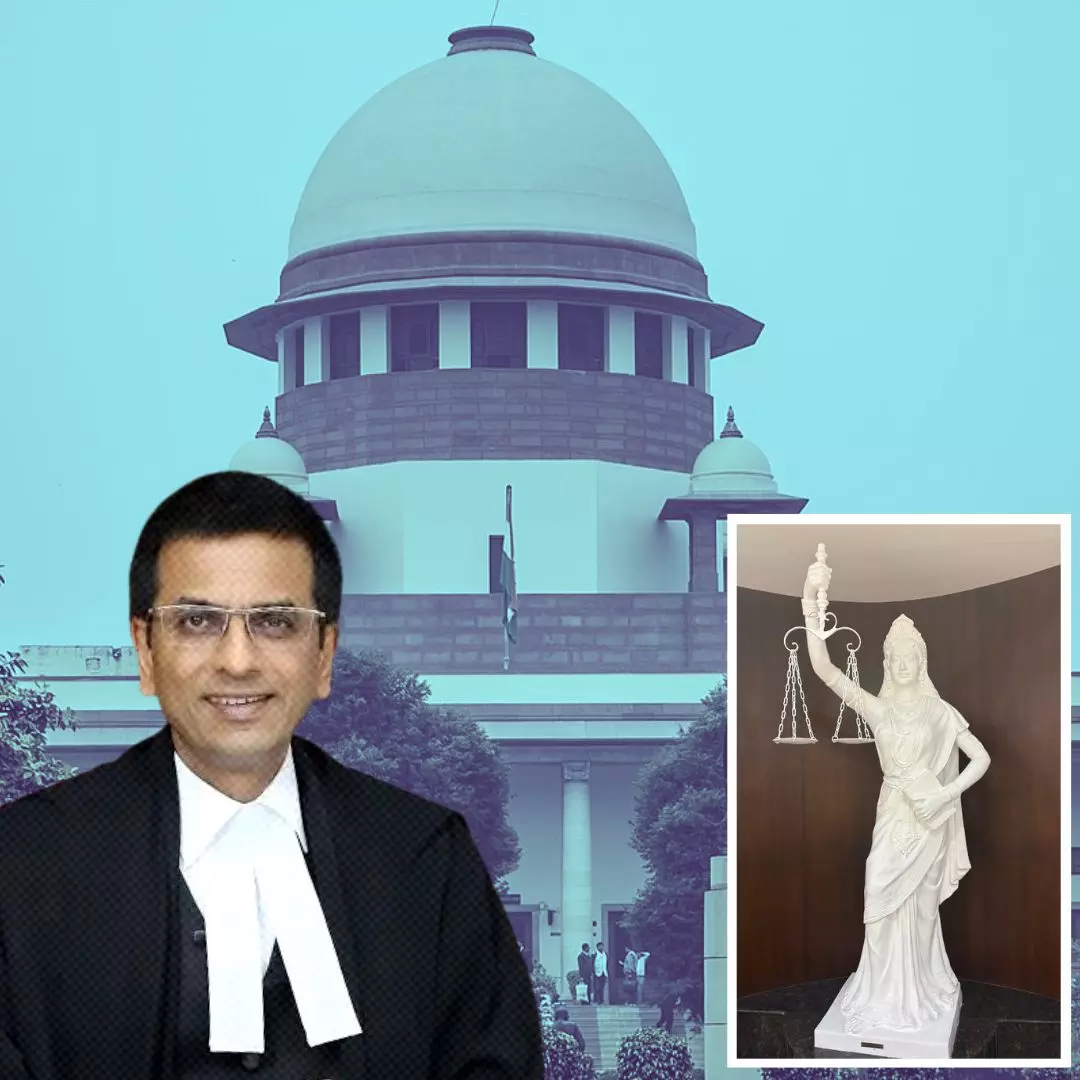On October 16, 2024, the Supreme Court of India unveiled a new statue of Lady Justice, featuring open eyes and holding the Indian Constitution instead of a sword. This transformation, commissioned by Chief Justice DY Chandrachud, symbolizes a shift away from colonial legacies and emphasizes that justice in India is based on constitutional values rather than punitive authority. The statue stands in the judges’ library and reflects a commitment to equality and fairness in the legal system.
A Modern Symbol of Justice
The newly unveiled Lady Justice statue at the Supreme Court now has her eyes wide open, signifying that the law is not blind. The traditional sword has been replaced with a copy of the Indian Constitution, reinforcing the message that justice should be administered according to constitutional principles. Chief Justice DY Chandrachud stated, “The law is not blind; it sees everyone equally,” highlighting the importance of equality before the law. The statue retains the scales of justice in her right hand, symbolizing impartiality in judicial decisions. This change aims to promote a more inclusive understanding of justice in contemporary India.
Contextual Background
The unveiling aligns with ongoing reforms in India’s legal system, including efforts to replace colonial-era laws like the Indian Penal Code with more modern frameworks such as the Bharatiya Nyaya Sanhita. The removal of the blindfold from Lady Justice marks a significant departure from traditional representations, which often emphasized impartiality through blindness. Instead, this new portrayal seeks to reflect an evolving identity for the Indian judiciary that embraces its constitutional roots while shedding colonial symbols.
Questions and Answers
1. What changes were made to the Lady Justice statue?
The statue’s blindfold has been removed, and it now holds a copy of the Constitution instead of a sword. This symbolizes a shift towards constitutional values rather than punitive authority while retaining the scales of justice for balance.
2. Why was this redesign commissioned?
Chief Justice DY Chandrachud believes it is essential to move beyond colonial symbols that have historically represented justice. By removing the blindfold, he emphasizes that “the law is not blind” and sees everyone equally, reflecting modern Indian values.
3. Where is the new statue located?
The redesigned Lady Justice statue stands prominently in the judges’ library at the Supreme Court of India, symbolizing its importance within the judicial system.
4. When was this change officially unveiled?
The new statue was unveiled on October 16, 2024, as part of ongoing reforms aimed at modernizing India’s legal identity.
5. How does this change fit into broader legal reforms in India?
This redesign is part of a larger movement to replace colonial-era laws with contemporary legal frameworks, such as the Bharatiya Nyaya Sanhita. It signifies a commitment to uphold justice based on constitutional principles rather than outdated practices.
The Logical Indian’s Perspective
The redesign of Lady Justice is a powerful statement about India’s commitment to a fair and equitable legal system. By moving away from colonial symbols and embracing constitutional ideals, we foster a more empathetic approach to justice that resonates with all citizens. This transformation invites us to consider how such symbolic changes can enhance public trust in our judiciary. What are your thoughts on this new representation of justice? We encourage our readers to engage in this vital conversation for positive social change.












